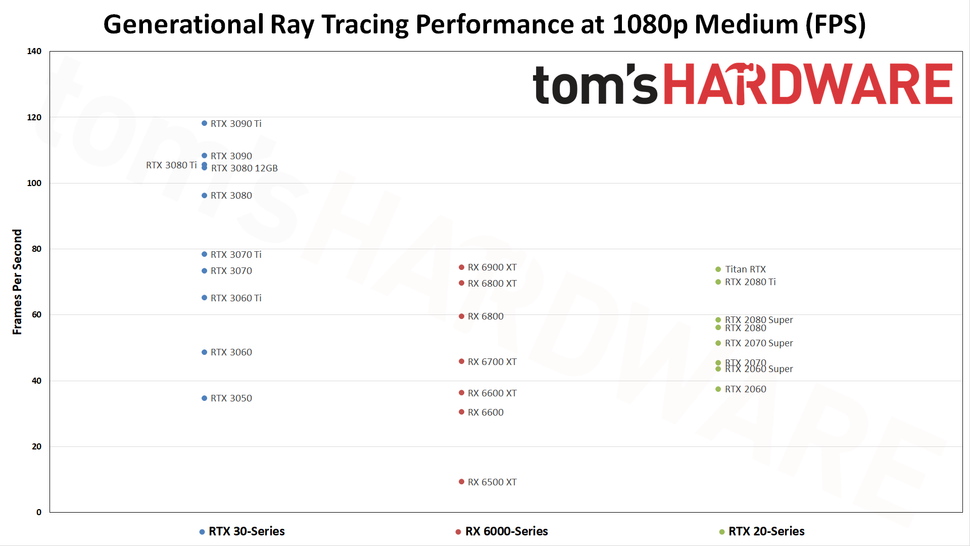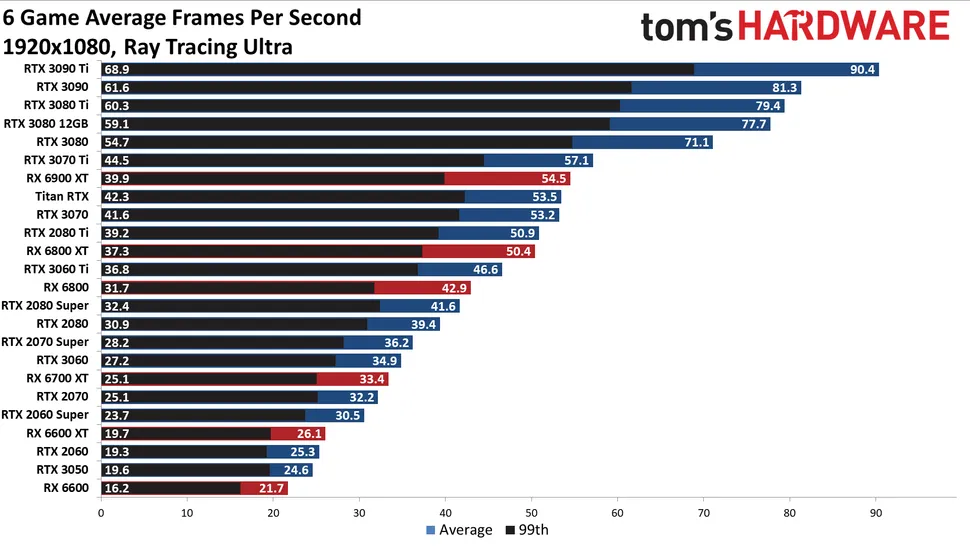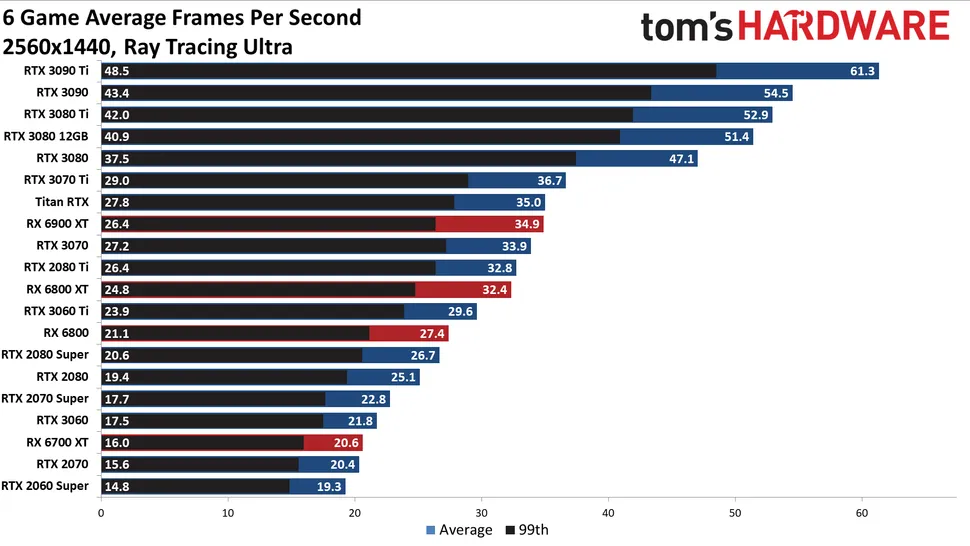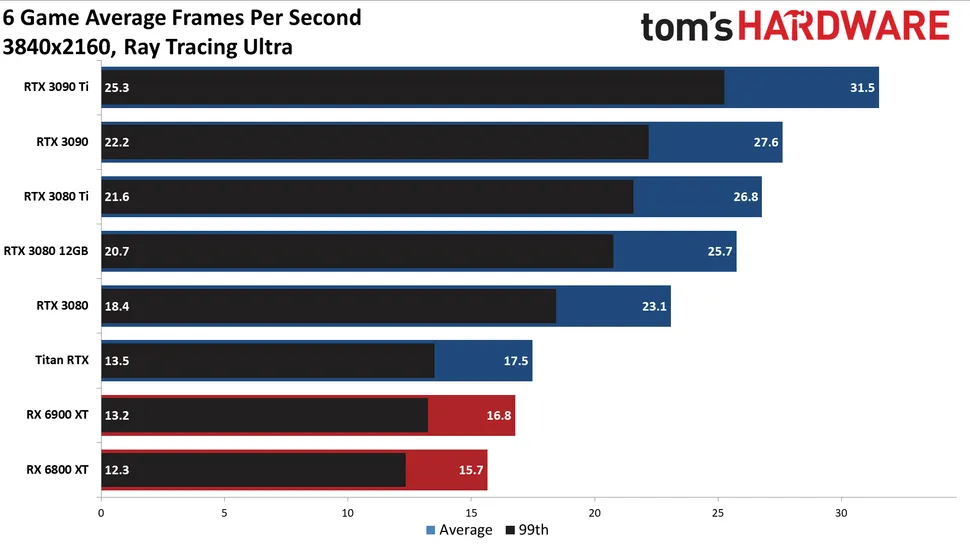DegustatoR
Legend
3Х would put them about on par with Ampere. I think they'll need more than that to remain on par with Lovelace.AMD needs at least a 3x increase (which is rumored) to not be obliterated again this fall.
Follow along with the video below to see how to install our site as a web app on your home screen.
Note: This feature may not be available in some browsers.
3Х would put them about on par with Ampere. I think they'll need more than that to remain on par with Lovelace.AMD needs at least a 3x increase (which is rumored) to not be obliterated again this fall.
If you didn't notice, this thread is created specifically for that purpose.No need to spam the forums with every single game performance test you come across
Hardware-based techniques applicable for ray tracing for efficiently representing and processing an arbitrary bounding volume - NVIDIA Corporation (freepatentsonline.com)
Nvidia seems to be considering both hardware SBVH and OBB(sort of) for better traversal performance.
As far as I know, Turing and ampere share basically the same RT cores with some small tweaks on Ampere (triangle position interpolation and motion blur)12 box intersections per clock. I think earlier patents mentioned 8. I wonder if Turing and Ampere already support these sub-box intersections as it looks like a big efficiency win for arbitrarily shaped geometry.
Hopefully it is. Sadly rumors suggest it's just another Ampere, having small improvements but having much more performance accomplished by higher power draw. So that would make it v1.2.As far as I know, Turing and ampere share basically the same RT cores with some small tweaks on Ampere (triangle position interpolation and motion blur)
Lovelace is really the next big evolution. Without marketing blurb, it should be:
Turing RT core v1
Ampere v1.1
Lovelace v2
Sadly rumors suggest it's just another Ampere
Just like Ampere is "just another Volta"?Sadly rumors suggest it's just another Ampere
At this point, 22 years after the first GPU, one can argue that every new gen is only evolution. Fundamental blocks like ALUs and 3D pipeline are well know, leaving small room for improvement. But truth is that Lovelace (and RDNA3) will bring performance increase that will remind us the early days of GPUs.Hopefully it is. Sadly rumors suggest it's just another Ampere, having small improvements but having much more performance accomplished by higher power draw. So that would make it v1.2.

As this poi
At this point, 22 years after the first GPU, one can argue that every new gen is only evolution. Fundamental blocks like ALUs and 3D pipeline are well know, leaving small room for improvement. But truth is that Lovelace (and RDNA3) will bring performance increase that will remind us the early days of GPUs.
Regarding the new features that this board will deep dive weeks and weeks after public announcement, it suffice to look at A100 to H100 evolution to get an idea of what to expect from one generation jump. Some think that H100 is just a refined A100. Other think it's a major new architecture. So I guess the final answer on Lovelace will depend on each one sensitivity.
One thing is sure, with next gen from both AMD and Nvidia coming at nearly same time, winter will be hot in this forum
AAA games without RT
Yeah that’s been my experience in GPU limited scenarios. Current cards are really good at holding at the power limit. So if they’re reading lower it’s due to a cpu limitation or other fps cap. A 3090 power limited to 300w would probably still wipe the floor with the 6900xt.
Hopefully it is. Sadly rumors suggest it's just another Ampere, having small improvements but having much more performance accomplished by higher power draw. So that would make it v1.2.
In my experience over the years you should not trust BaseMark with any kind of accurate performance data. They do not have the resources to validate and optimise their benchmarks.A new ray tracing benchmark from BaseMark has been released, called Relic Of Life, at 4K, the 3090Ti is almost 3 times faster than 6900XT.
https://www.comptoir-hardware.com/a...-test-nvidia-geforce-rtx-3090-ti.html?start=5
In my experience over the years you should not trust BaseMark with any kind of accurate performance data. They do not have the resources to validate and optimise their benchmarks.
No apparent reasons not to expect some changes here in Lovelace either. No idea what that rumor is referring to.In terms of that rumor what I thought was maybe it as specifically referring to no changes in the SM configuration. We've had the last few generations making changes focused in that area with Pascal->Turing separate FPU and ALU, Turing->Ampere x2 FPU. If we want to say Pascal also had changes in that they halved the FPUs per SM from Maxwell then it'd mean I believe they've made SM configuration changes every generation.
We've revamped our GPU testbed and updated all of our benchmarks for 2022, and are nearly finished retesting every graphics card from the past several generations. We have completed testing of the current generation AMD RDNA 2 and Nvidia Ampere GPUs, the Turing and RDNA series as well, and many of the other generations as well. Most of what remains are either budget offerings or extreme Titan cards, or cards that are no longer supported with the current drivers. We'll continue to flesh out the remaining holes with more GPUs as we complete testing..




They tested six ray tracing games: Bright Memory Infinite, Control Ultimate Edition, Cyberpunk 2077, Fortnite, Metro Exodus Enhanced, and Minecraft. The 3090Ti is essentially 2 times faster than 6900XT in these games.
